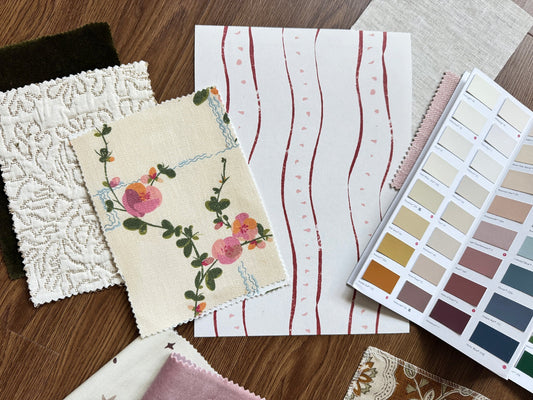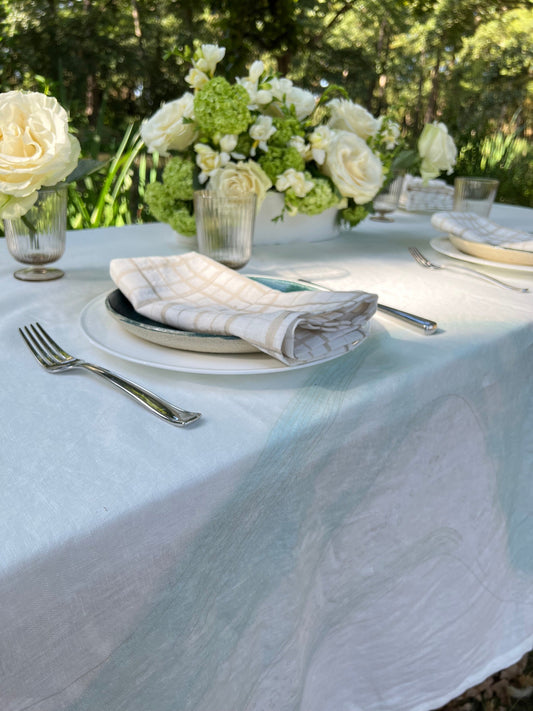How to care for your linen napkins and tablecloths
Caring for your linen tablecloths is simpler than you think, all it takes is washing them in cold water on a gentle cycle, using a mild detergent, and finish them off with a cold rinse. As with cotton, only wash linen tablecloths and napkins with other linen items. If using a tumble dryer, dry until almost dry then let air-dry or finish with an iron. Or even better, embrace the cloth’s natural texture for a more relaxed look and enjoy the fabric getting softer over time.
If you want to make the most of your linen items, here are some basic rules we recommend you follow to enjoy it for years to come.
How to wash linen
Linen items can be both hand-washed and machine-washed, either method is fine, but we recommend the simple guidelines to follow for each method.Machine wash
- Separate white, dark, and coloured linens. For best results, wash them separately from other fabrics. It’s important to avoid mixing heavy items like jeans, jumpers, towels in a load with linen textiles.
- Although linen in white and natural colours can be washed in high temperatures, it is best to wash in lukewarm water (30°C). High temperatures may cause shrinkage of up to 10% and weaken the linen fibre.
- Use the gentle machine cycle and don’t overload your washing machine.
- We strongly encourage to use mild detergent formulated for delicate fabrics. Don't bleach.

Hand wash
Follow the same guidelines as above- Low water temperature and separate whites from other colours.
- Use mild detergent and leave to soak for 10min.
- Gently swish the item around. Don’t wring, twist or scrub as it can stretch the fabric.
- Hang to dry.

Removing stains from linen napkins and tablecloths
The best advice we can give you is to act sooner rather than later. If you let dirt, oil, and other stains sit, they will absorb deep into the fibre making removal a more difficult task.If you have a small stain, try soaking it in a water-detergent solution. If that doesn’t help, you can use some mild dishwashing liquid and gently massage it until the dirt comes out, then wash it as you usually would. Some stains are trickier and might come off by sprinkling baking soda and a few drops of vinegar on the fabric, then blotting it with a paper towel to soak up the moisture.
Drying linen
Hang drying linen is by far the best option. High heat might cause significant shrinkage and/or weaken the fibres. Linen is fast drying, you will only need to shake it before hanging or line-drying.If you decide to tumble dry your linen, make sure to use a low heat option.
Ironing linen
Natural fibres like linen will wrinkle, crumple, and crease, you just have to embrace it and enjoy the fabric getting softer over time. However, if you really want an item pressed, use a medium-hot iron on the fabric while it’s still damp or overlay it with a damp towel.
Storing linen
Make sure your linens are completely dry to avoid mildew. Linen, like other natural fibres, need to breath, so it is best to store them in a cool, dry place. Don’t be tempted to store linen in plastic bags.
Photo credit: Photo by Svitlana on Unsplash



